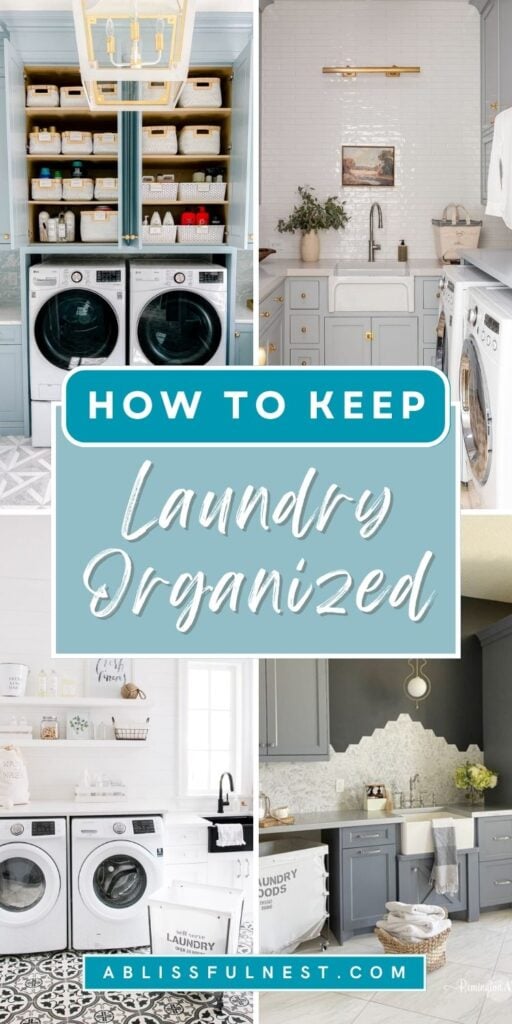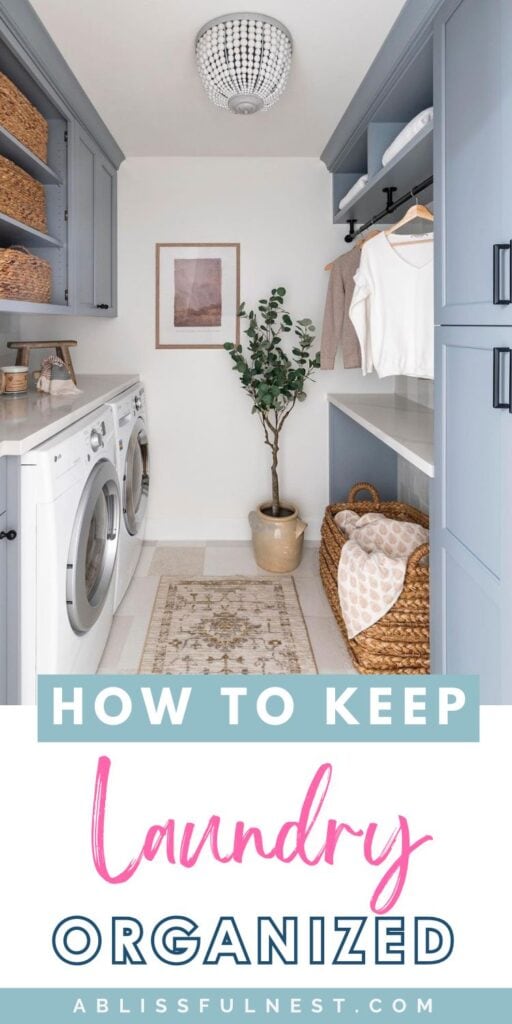It’s easy to feel overwhelmed when figuring out how to keep laundry organized, especially if laundry piles seem to appear overnight.
Many home organization ideas work in theory, but laundry rooms get messy fast and often feel like forgotten corners of the house.
Baskets overflow, socks go missing, and clean clothes get mixed with dirty ones before you even realize it’s happening.
If you share laundry duty with others, things get even more complicated without a system that makes sorting and folding simple.
Without zones for hampers, supplies, and clean clothes, the space quickly feels more chaotic than helpful.
You may have tried containers or signs, but if the setup doesn’t match your routine, it just adds more clutter.
A disorganized laundry room also wastes time, especially when you’re digging through clothes or searching for lost stain remover.
This post may contain affiliate links. As an Amazon Associate and a participant in other affiliate programs, I earn a commission on qualifying purchases at no additional cost to you.
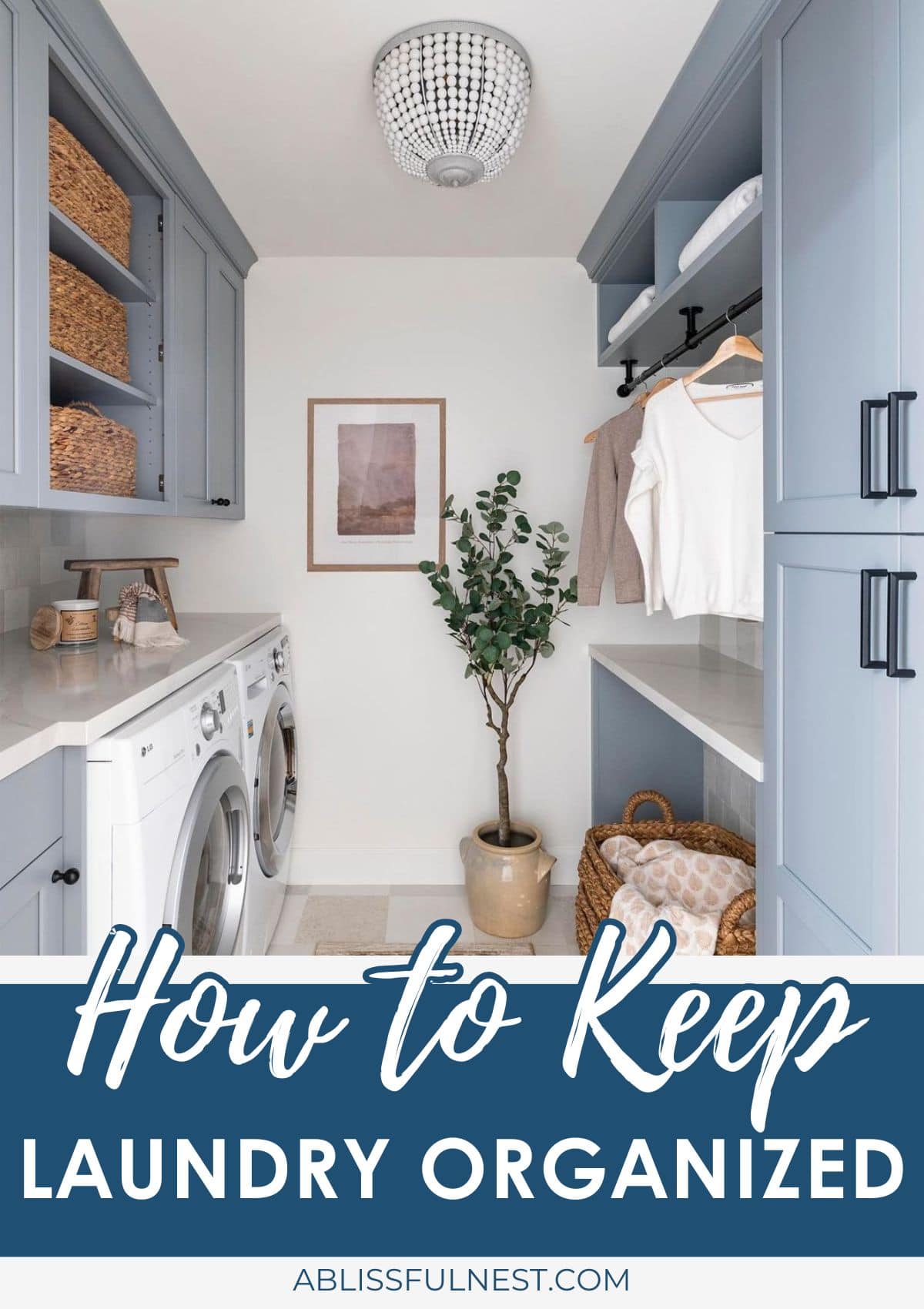
There’s nothing relaxing about stepping into a room filled with unsorted laundry and missing cleaning supplies.
The good news is, you don’t need a huge space or fancy tools to get this part of your home in order.
A few changes to how your laundry space flows can make the whole process easier and less stressful.
Why Is It Important To Keep Your Laundry Organized
Laundry is something most of us do every week, but without a system in place, it quickly becomes one of the most stressful chores.
When your laundry area is cluttered or messy, even simple tasks like folding or treating stains feel harder than they should.
Disorganization leads to mistakes like rewashing clean clothes or forgetting to treat a stain before tossing it in the machine.
Wasting time looking for missing socks or supplies adds up fast, especially if laundry is a shared job in your household.
If your system doesn’t match your daily routine, laundry piles grow faster, and the room becomes another space to dread.
Having everything in its place reduces the mental load and makes it easier to keep up with daily or weekly washing.
Keeping your laundry organized also helps protect your clothes since you’re more likely to treat them well when the space feels calm.
When your space is clean and clearly laid out, it’s easier to spot problems like damaged zippers or color bleeds.
An organized area also improves safety by preventing trips over baskets, open lids, or spills without regular tidying.
Once your laundry system feels manageable, the whole process becomes more efficient and less likely to be put off for later.
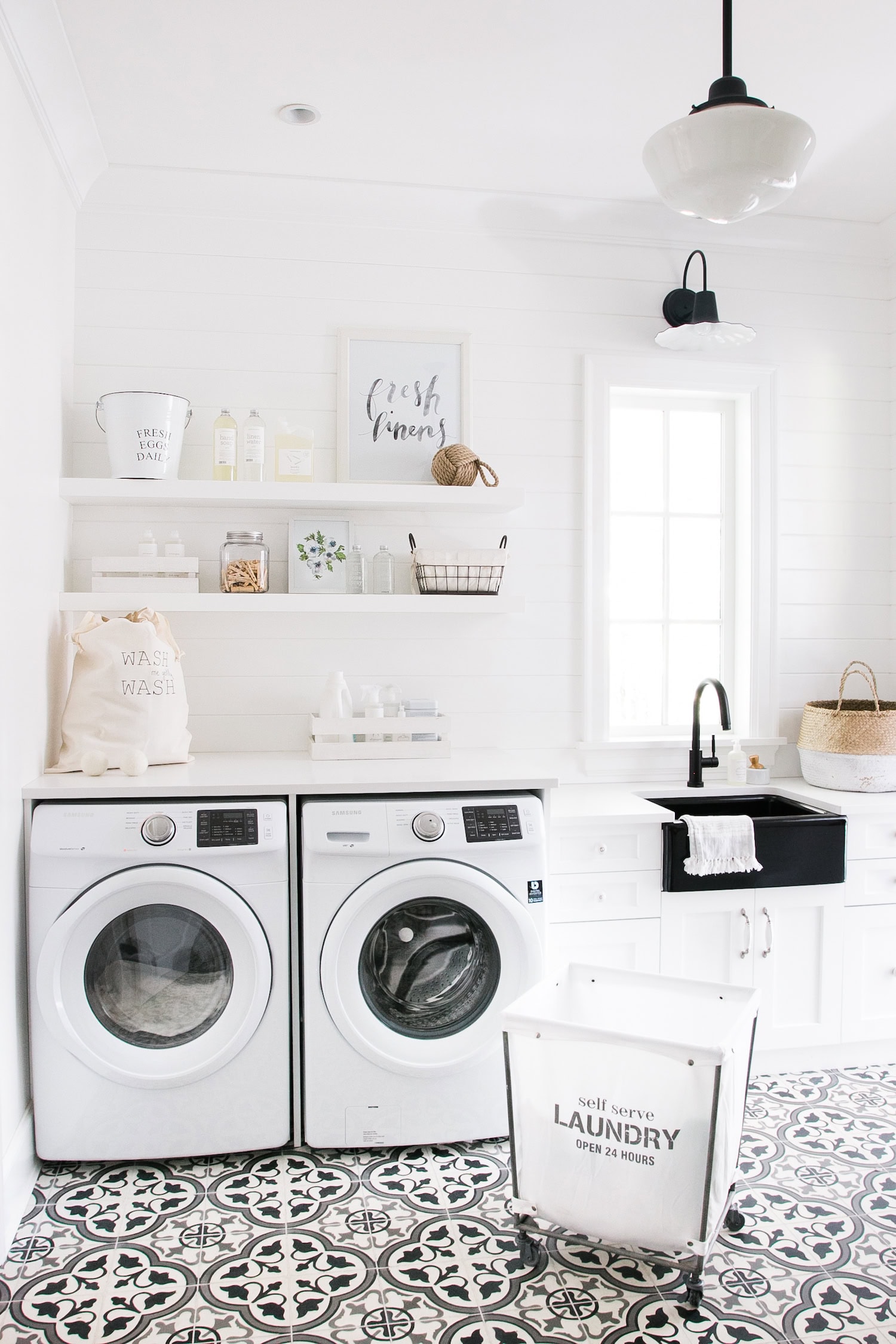
What You Need To Keep Your Laundry Organized
Before setting up a laundry routine that works, it helps to gather a few essentials to keep everything neat and accessible daily.
These items support a cleaner space, easier workflow, and help you stay on track even when laundry piles get bigger than expected.
- A weekly laundry schedule or checklist
- Divided laundry hampers or baskets
- Wall-mounted hooks or shelves
- Labeled containers for detergent and supplies
- A folding station or flat surface
- Rolling cart or small storage shelf
- Mesh bags for delicates or socks
- Stain treatment kit
- Hangers for air drying or steaming
- Trash bin for lint and packaging
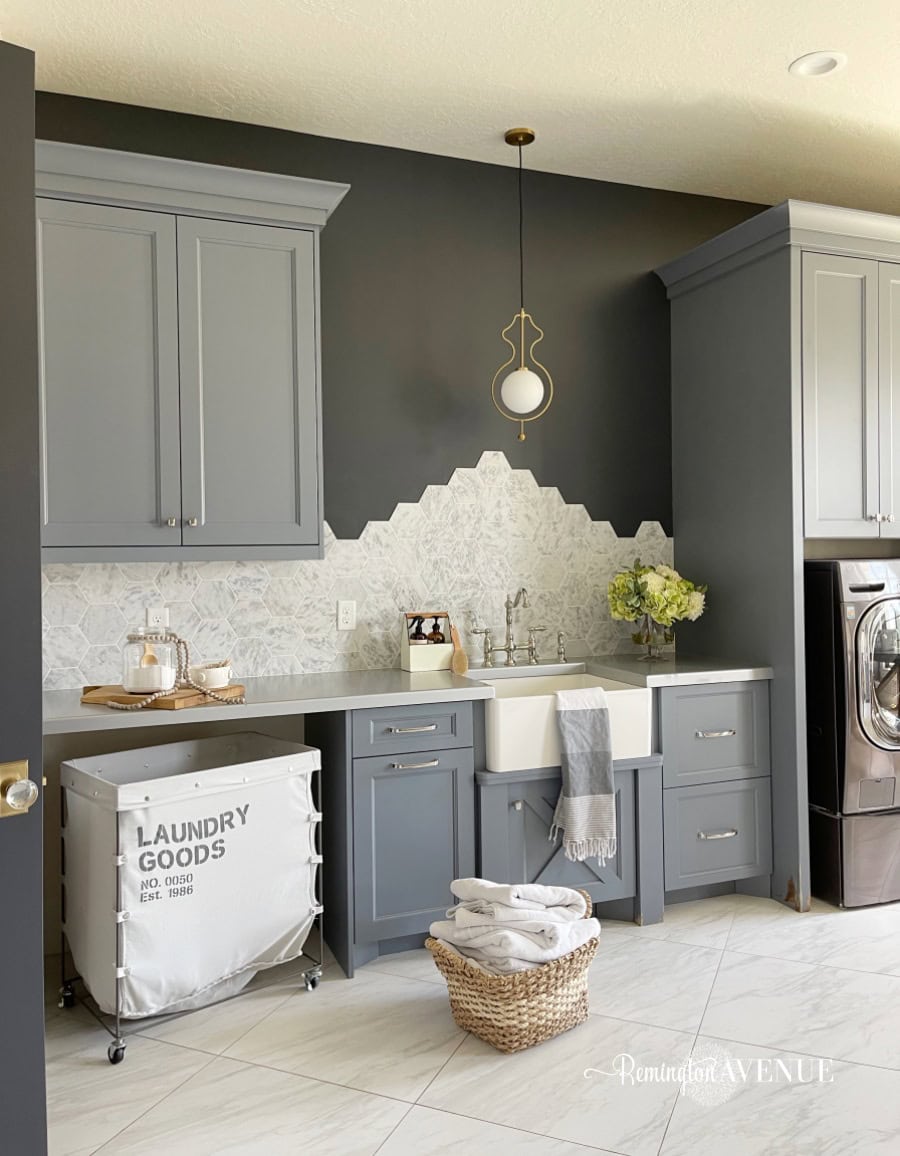
Supplies To Keep Laundry Organized
The right storage tools make laundry less frustrating and help your space stay clean and efficient even on your busiest days.
Here are some tried-and-true supplies that work well in small laundry rooms or shared spaces.
Tap Photos To Shop
Would you like to save this post?
How To Keep Your Laundry Organized
With the right tools and a few habits, you can set up a laundry system that saves time and reduces daily frustration.
An organized space makes the entire process easier, helps you stay on track, and makes laundry feel manageable every time.
Step 1: Declutter your space
Start by removing empty bottles, stray socks, broken baskets, or anything else that no longer serves a purpose in your laundry area. Clear countertops and shelves help the space feel lighter and more functional, even if your room is small or shared. Decluttering first gives you room to build a new system that works with your everyday routine.
Step 2: Sort by category
To simplify your sorting process, use divided hampers or separate baskets labeled for light, dark, towels, and delicates. Pre-sorting cuts laundry time in half and keeps clothes from piling up into one big, unmanageable heap. This also helps other family members contribute without guessing where things go.
Step 3: Label everything
Add clear labels to containers, baskets, drawers, and shelves so everyone knows exactly what belongs where, without needing to ask. Labels create consistency and make it easier to return items to their proper place after each use. They also help keep the space tidy, even when multiple people share the laundry area.
Step 4: Use vertical storage
Take advantage of wall space by installing hooks, shelves, or pegboards to hold tools and supplies. This keeps floors clear and helps you find things quickly without digging through drawers or bins. Vertical storage works especially well in small laundry rooms with limited square footage.
Step 5: Create a folding station
Even a simple table or countertop makes a difference when you need space to fold clothes fresh from the dryer. Try to place the surface near your machines to cut down on steps and keep laundry moving smoothly. Having a dedicated spot helps you stay focused and prevents clean piles from spreading elsewhere.
Step 6: Keep supplies together
Store all detergent, stain remover, dryer sheets, mesh bags, and accessories in one designated area or basket. Keeping everything grouped saves time and prevents half-used items from getting lost behind the machines. You’ll waste less time and avoid frustration when everything you need is right within reach.
Step 7: Establish a routine
Decide on a laundry schedule that fits your week, whether that’s one load daily or a full wash day once or twice a week. A consistent routine makes laundry feel less overwhelming and prevents clothing from building up into unmanageable piles. This habit helps everyone in the home know when laundry happens and what their role might be.
Step 8: Add a temporary basket
Use a small bin to collect clothes that need extra care or are waiting for a missing match, like socks or buttons. Empty it regularly so it doesn’t become a hidden pile that never gets addressed. This small step helps you stay on top of items that might otherwise get lost in the shuffle.
Step 9: Tidy daily or weekly
Spend five to ten minutes wiping surfaces, putting away supplies, and emptying trash like lint or packaging. Regular cleaning keeps the laundry area functional and helps maintain a space that feels easy to walk into and use. It’s a simple habit that supports the entire system you’ve worked to build.
Step 10: Do a monthly reset
Set aside time once a month to check baskets, refill containers, and toss any expired or unused products. Monthly maintenance prevents clutter from sneaking back in and gives you a fresh start to stay motivated. This quick reset helps your laundry space stay functional and easy to use for the long term.

Frequently Asked Questions
Set a weekly laundry schedule that fits your routine and assign each family member their own basket to manage clothing flow. Doing smaller loads more often helps reduce buildup and keeps laundry from becoming overwhelming or taking over your entire weekend.
Use wall shelves, hanging organizers, and slim rolling carts to store essentials without taking up valuable floor or counter space. Maximizing vertical space allows you to stay organized even in tight areas with limited room for traditional storage furniture or baskets.
Give them small jobs like matching socks or loading the washer, and praise their effort to build confidence and responsibility over time. Turning it into a fun routine with music or rewards helps kids feel included and more willing to help regularly with laundry.
Yes, try using divided hampers, folding guides, label makers, and mobile laundry apps to keep everything sorted and easily managed. These tools reduce confusion, speed up the process, and make it easier for everyone to consistently follow the same laundry system.
Check your system every three months to clear clutter and make updates that reflect seasonal changes or growing household needs. Regular updates help your setup stay functional so it continues to meet your family’s routines and space limitations effectively over time.
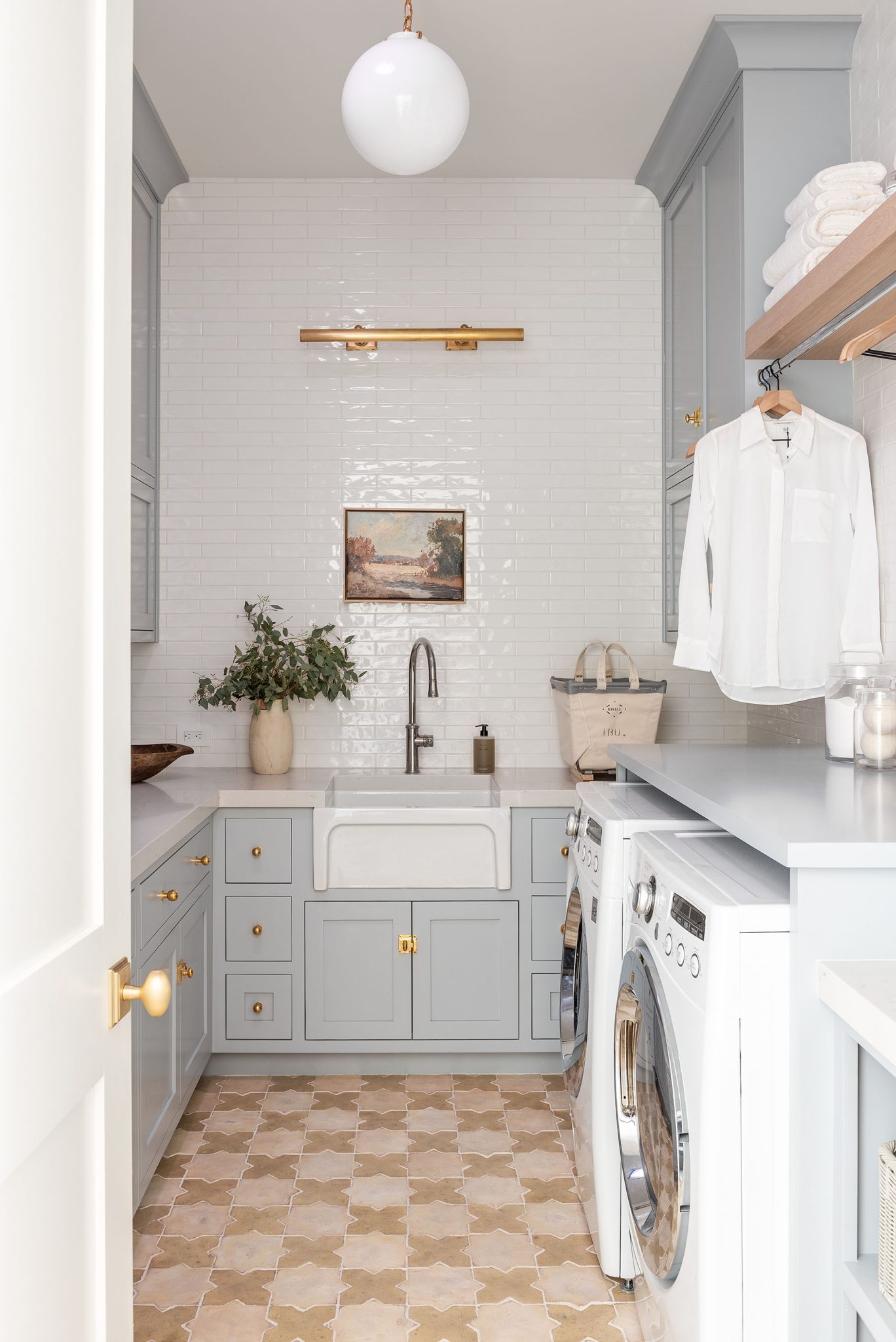
Many people struggle with keeping up, but even small steps make a difference.
So, learning how to keep laundry organized saves you time, stress, and energy throughout the week.
With simple tools and daily habits, your laundry area becomes less of a mess and more of a useful, calming space.
The right system helps everyone in the house stay involved and on track, even on busy days.
You will never regret having a tidy laundry routine that works for your space and schedule!



